Stone Curlew, Griel, Triel, Alcaravão, Alcaraván Común
Spotted in the Alentejo region of Portugal. Stone Curlew sound
The Stone-curlews, also known as Dikkops or Thick-knees are a group of largely tropical birds in the family Burhinidae. Despite the group being classified as waders, most species have a preference for arid or semi-arid habitats. They are found worldwide within the tropical zone, with some species also breeding in temperate Europe and Australia.
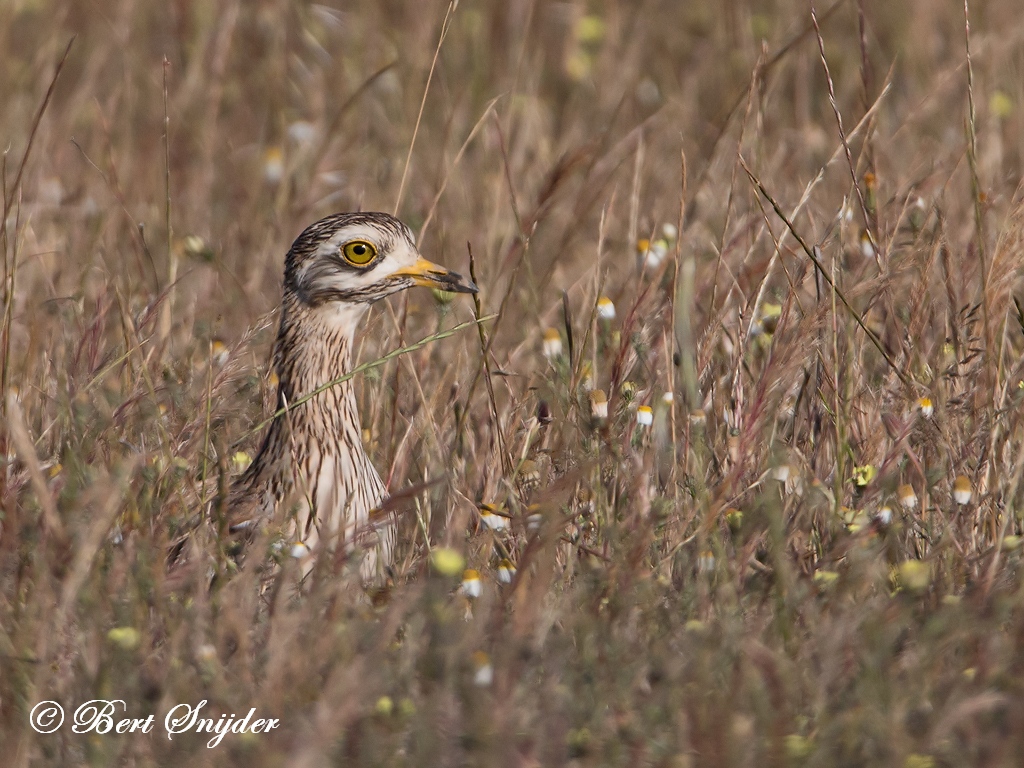
More photos at the bottom of this page.
They are medium to large birds with strong black or yellow black bills, large yellow eyes—which give them a reptilian appearance—and cryptic plumage. The names Thick-knee and Stone-curlew are both in common use, the preference among authorities for one term or the other varying from year to year. The term Stone-curlew owes its origin to the broad similarities with true curlews (which are not closely related). Thick-knee refers to the prominent joints in the long yellow or greenish legs and apparently originated with a name coined in 1776 for B. oedicnemus, the Thick-kneed Bustard.
They are largely nocturnal, particularly when singing their loud wailing songs, which are reminiscent of true curlews.
The diet consists mainly of insects and other invertebrates. Larger species will also take lizards and even small mammals.
Most species are sedentary, but the Stone Curlew is a summer migrant in the temperate European part of its range, wintering in Africa.

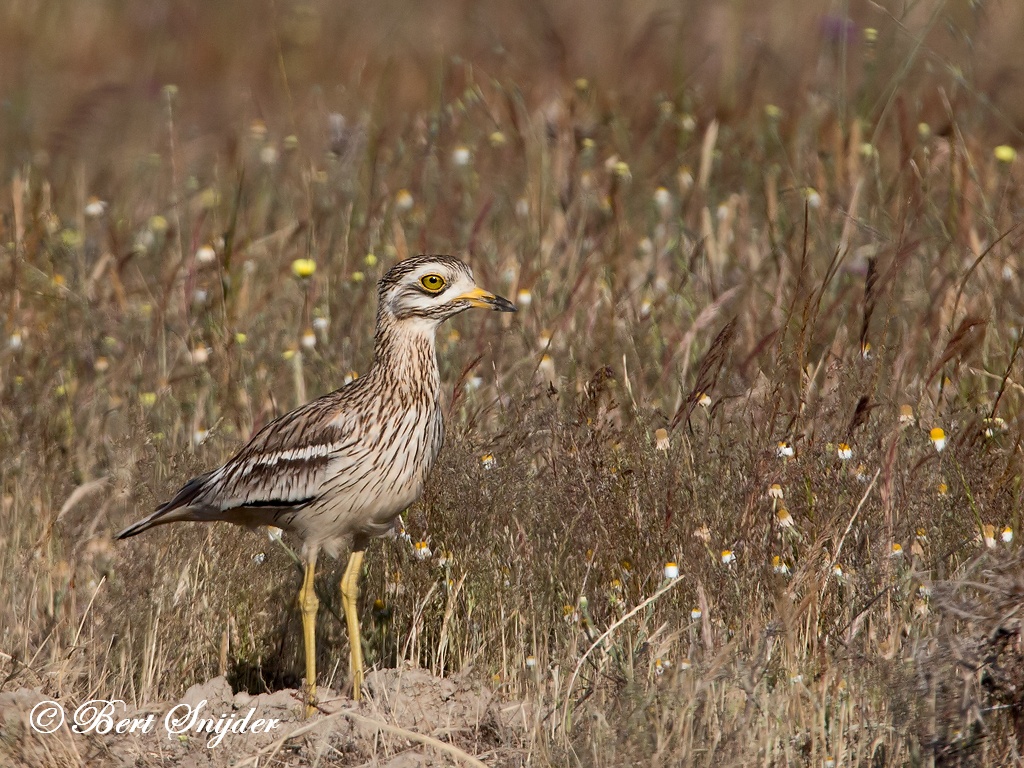
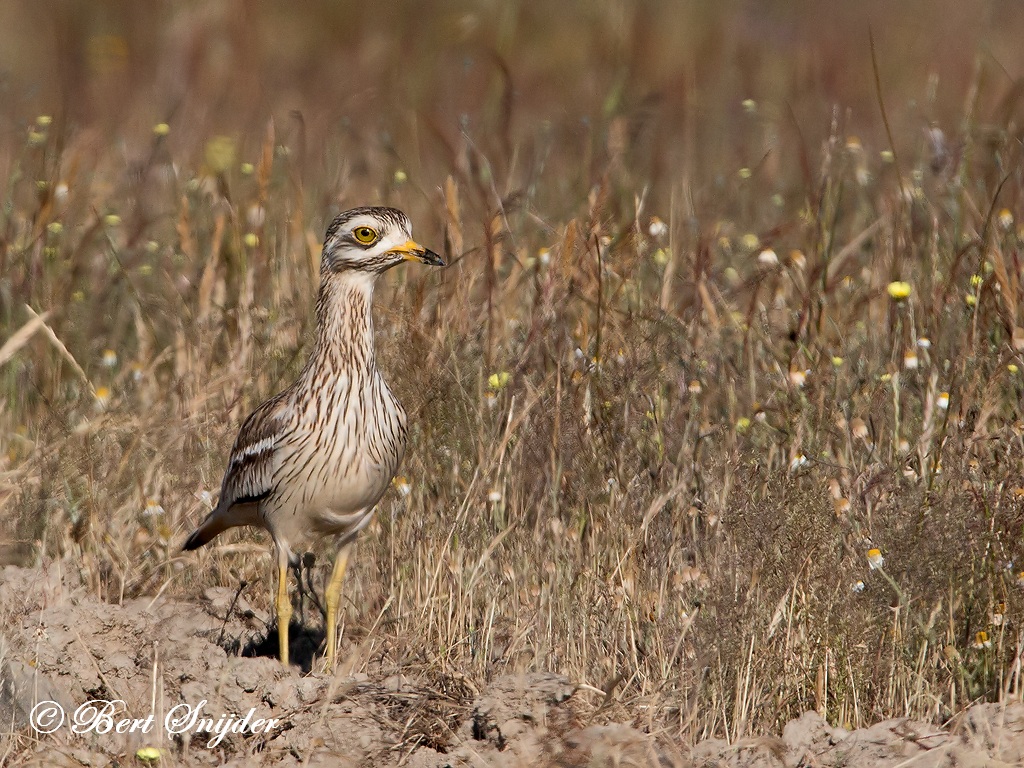
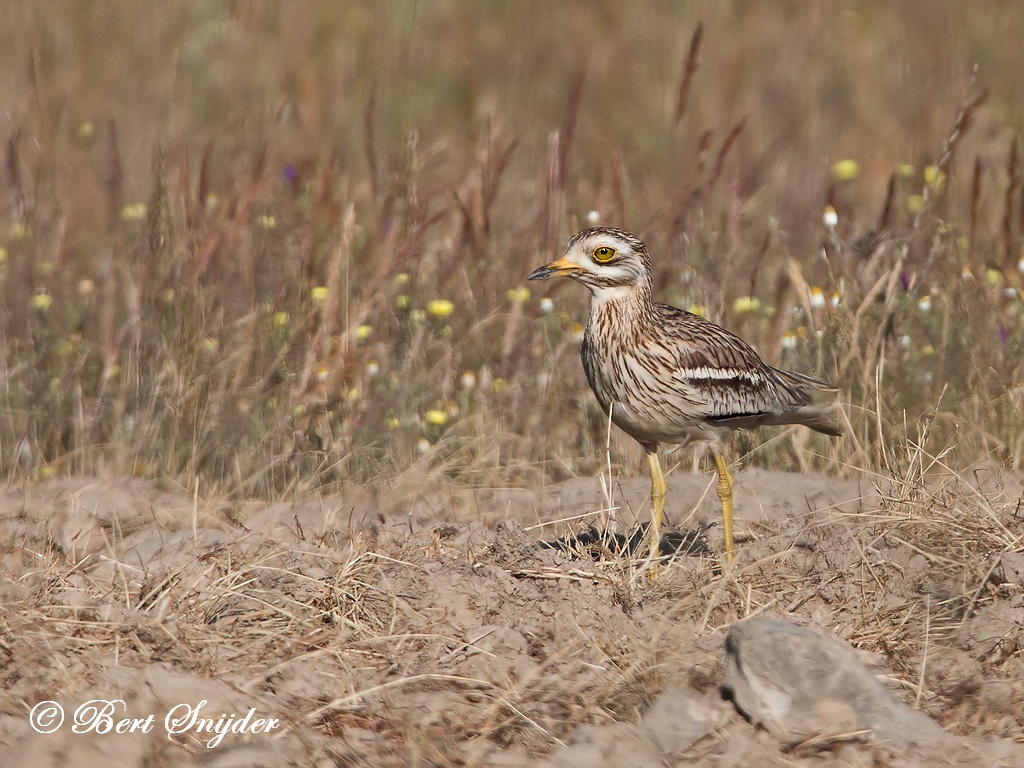
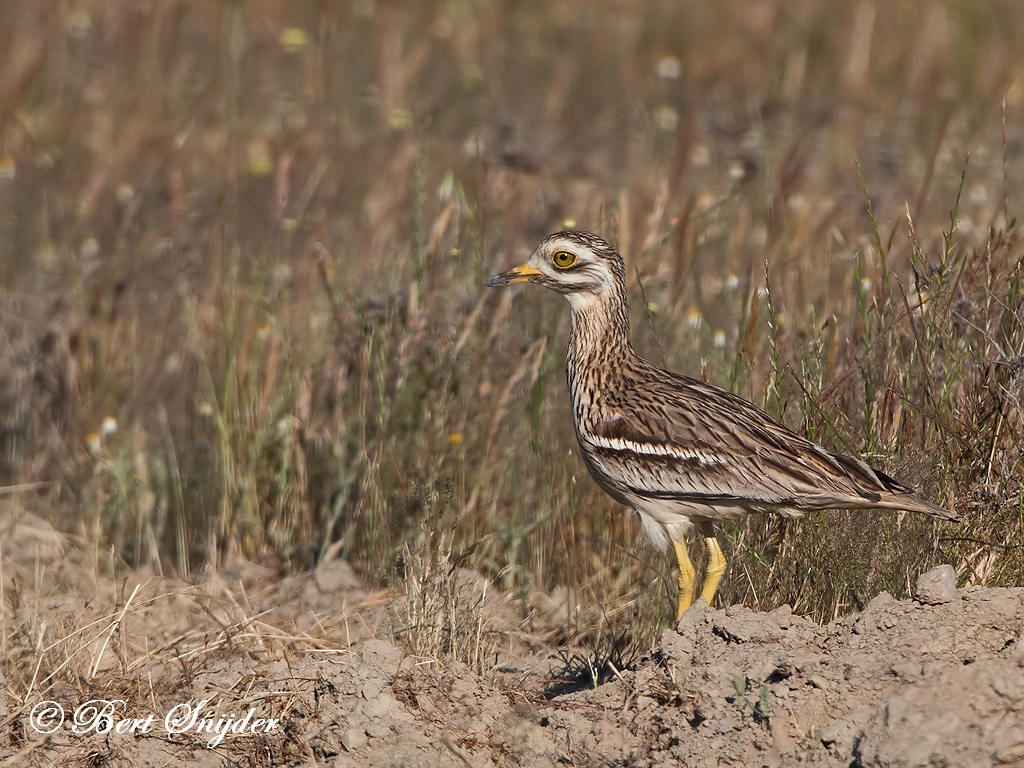
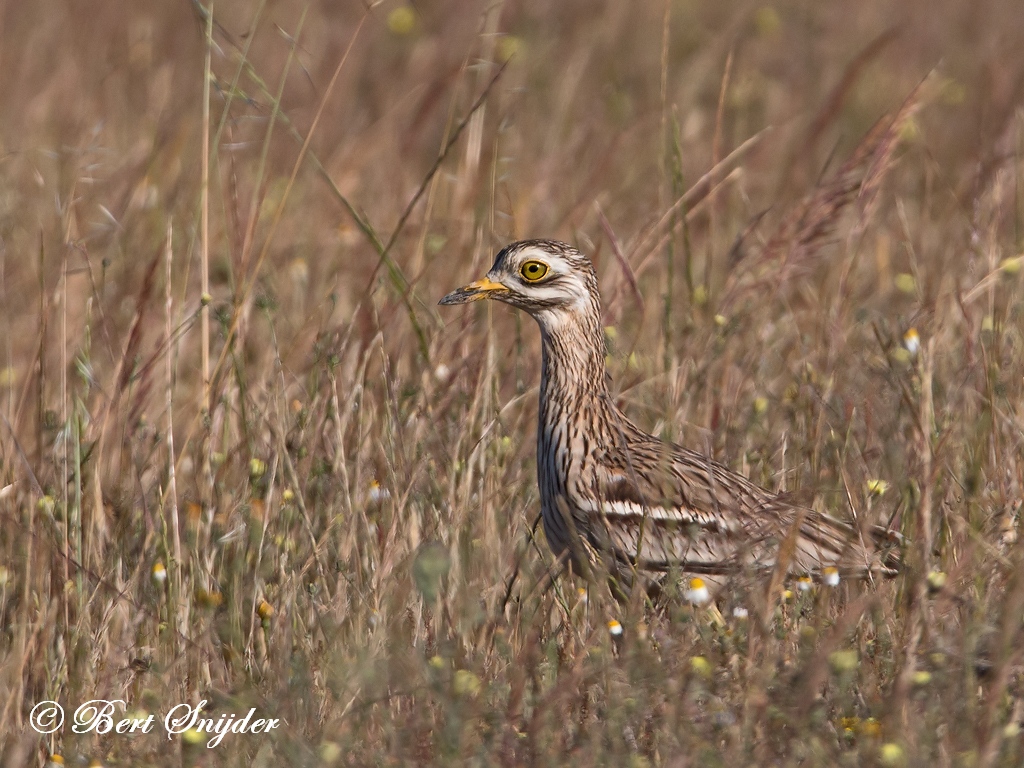
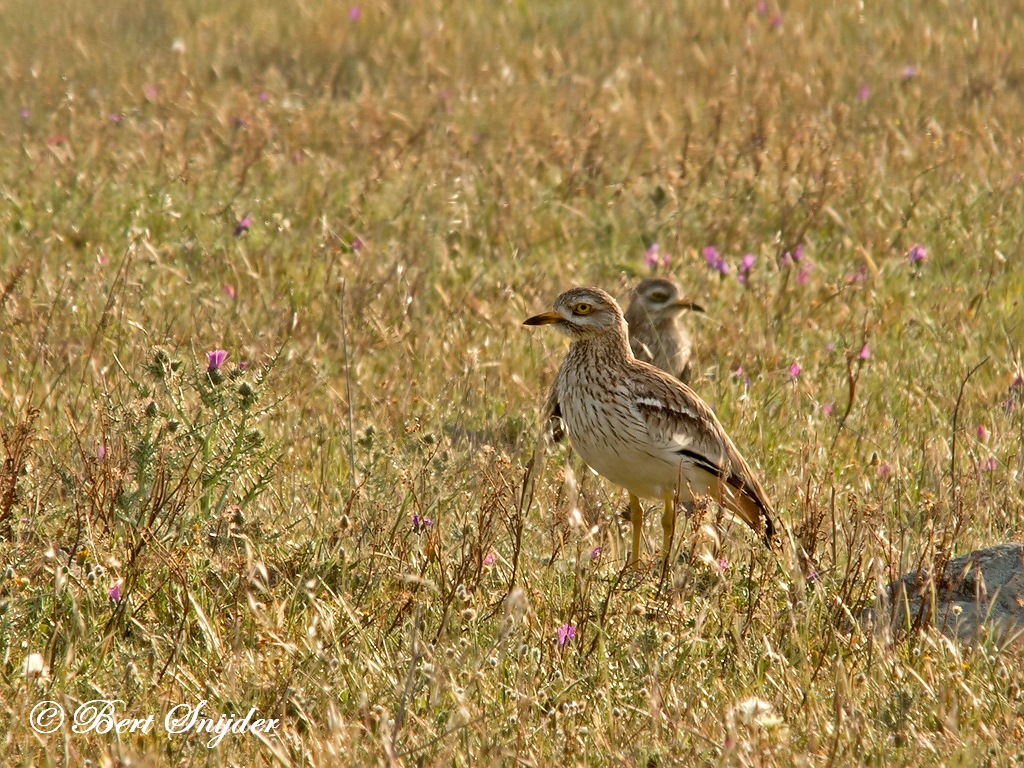

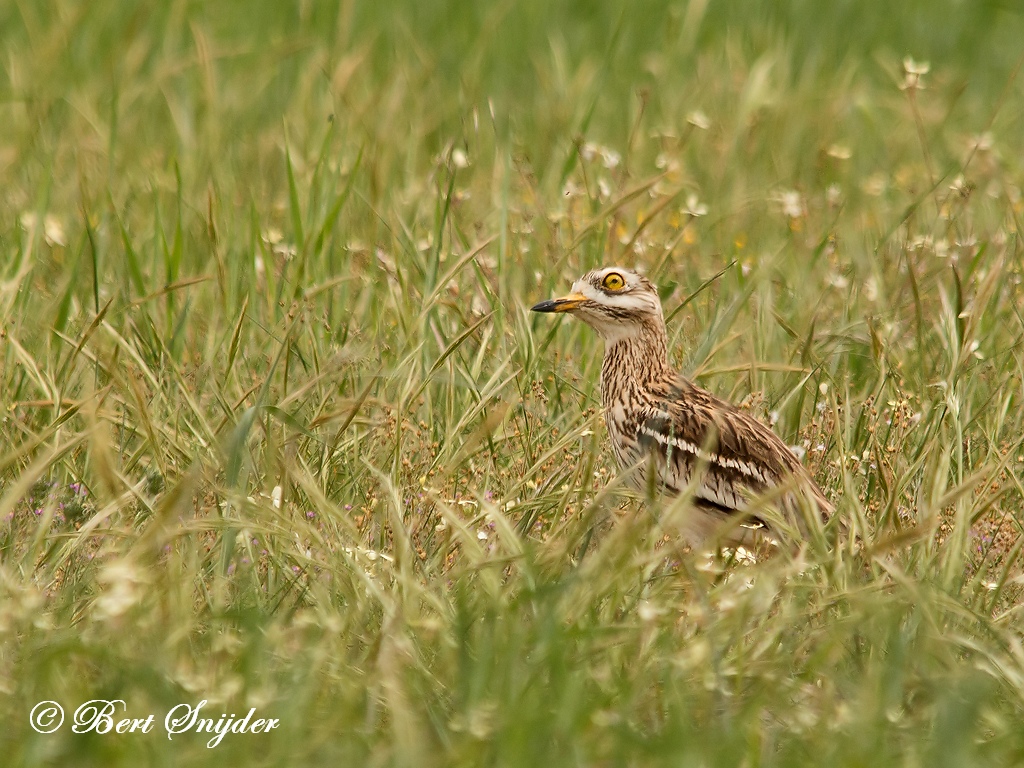
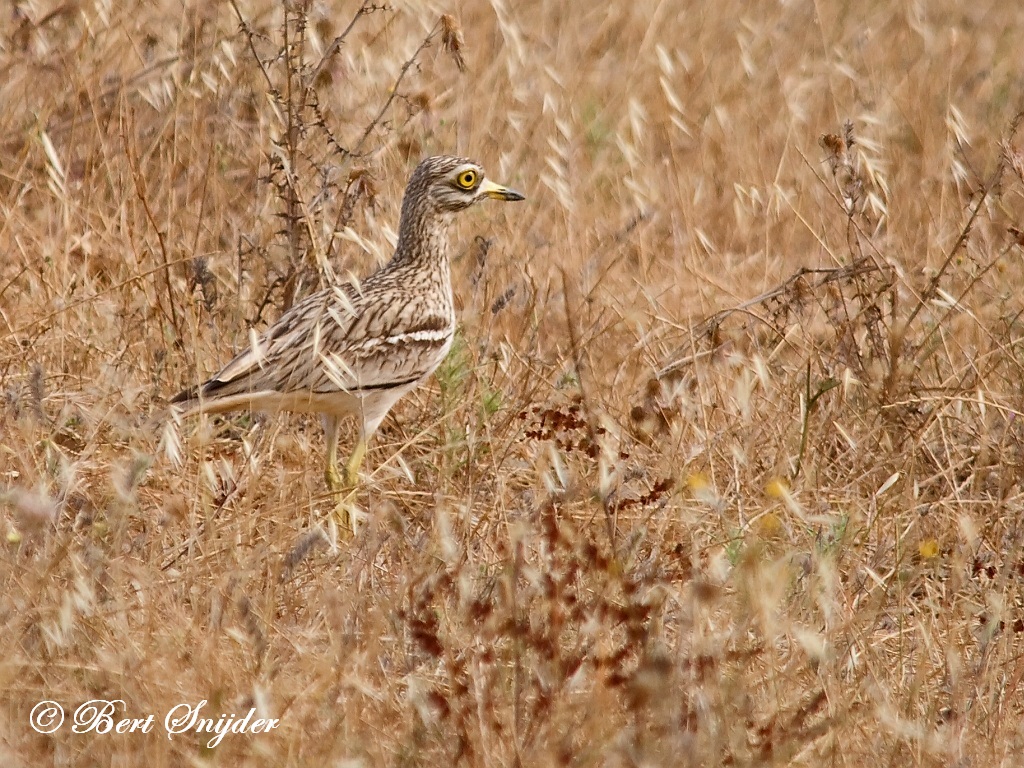
Other synonyms:
Asturian: Chepu, Gachegu
Azerbaijani: Çobanaldadan
Breton: Ar bourlagad kirie
Catalan: Hubara, Sebel·lí, Torlit
Catalan (Balears): Sebel·lí
Valencian: Hubara
Czech: Dytík úhorní, Dytík žhorní
Welsh: Cwtyn llwyd, Gylfinir y garreg, Rhedwr y moelydd
Danish: Triel
German: Dickfuß, Triel
English: Common Stone Curlew, Common Stone-Curlew, Common Thick-knee, Eurasian Stone Curlew, Eurasian Stone-Curlew, Eurasian Thick-knee, European Stone Curlew, European Stonecurlew, European Thick-knee, Northern Stone Curlew, Northern Stonecurlew, Northern Stone-Curlew, Northern Thick-knee, Stone Curlew, Stone Thick-knee, Stonecurlew, Stone-Curlew, Thicknee
Esperanto: trielo
Spanish: Alcaravan, Alcaraván, Alcaraván Común
Estonian: Jämejalg
Basque: Atalar, Atalarra, Torlit
Finnish: Paksujalka
Faroese: Læmingur
French: Oedicnème criard
Irish: Crotach Cloch
Gaelic: Cuilbneach nan Clach
Galician: Alcaraván, Torlit
Hindi: Kannadi al katti
Hungarian: Ugartyúk
Icelandic: Tríll
Italian: Chiurlo delle petraie, Occhione, Occhione comune, Occhione eurasiatico
Japanese: ishichidori, Ishi-chidori
Cornish: Glynbras
Latin: Burhinus [oedicnemus or indicus], Burhinus oedicnemus, Burhinus oedocnimus
Lithuanian: Storkulnis
Maltese: Tellerita
Dutch: Griel
Norwegian: Triel
Polish: kulon, Kulon zwyczajny
Portuguese: Alcaravão
Romansh: Burbin
Russian: Avdotka
Scots: Cuilbneach nan clach
Slovenian: prlivka
Albanian: Gjelaci symadh
Serbian: nocni potrk
Swedish: Tjockfot
Swahili: Chekehukwa wa Ulaya
Vietnamese: Burin
Travel Birdwatching Holiday Alentejo, Vacation Portugal for birders to see birds on your trip. Guided Birdwatching Tours & Trips.